A glimpse into the future of international education – a view from a Land Down Under
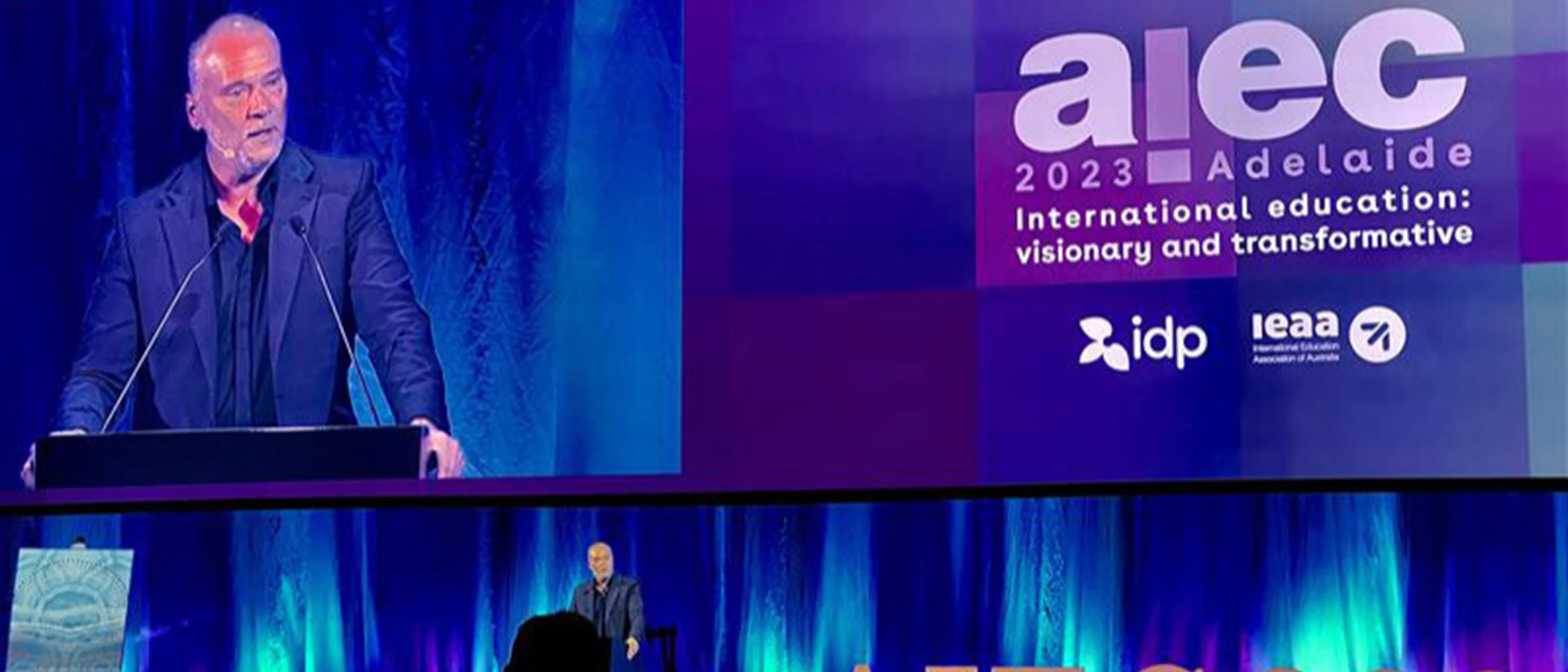
Stan Grant, writer, broadcaster and First Nation Australian
As Jason Clare, the Australian Minister for Education remarked at the Australian International Education Conference, (AIEC) in Adelaide last week, “international education is Australia’s largest export that isn’t dug out of the ground.” That makes it bigger than tourism, aviation or financial services. At the last count, it supports 250,000 jobs and contributes $40 billion annually to the Australian economy. His speech unapologetically focused economic importance. So, it is hardly surprising that protecting the country’s largest service export is an enduring priority for the Federal government.
More profound to this UK-based visitor is how recognition of this economic powerhouse across the sector shapes attitudes and policy. International education in Australia tends to be more tightly regulated, more transparent with data more routinely and readily available. The recognition of agents as a critical channel for students is well understood and is formally regulated. Overall, the transparency in this approach protects institutions and students in a way that is not always the case elsewhere.
In Australia, there is also a sense of unity between the public and private sectors. IDP, the main conference sponsor and organizer is a publicly listed company - and there is evidence of constructive private sector engagement across the spectrum. Hardly surprising when one considers that the most international university in the United States, New York University, would just about make the top five most international universities in Australia. There is a separate discussion to be had about how vulnerable this makes Australian universities - but perhaps for another blog.
The key is policy developments in Australia regularly migrate across other major destination countries such as the UK, US and Canada. It is therefore worth watching what is happening here. So, what are the themes from this year’s conference?
- Robust, Resilient and Diverse: The present and the future of international education demand - an Australian perspective
Data collection and dissemination on international student mobility patterns is often more robust and timelier than it is elsewhere across the world. Data shared at the conference confirms two trends which are playing out elsewhere. First, there has been a strong and very rapid bounce back in the number of students arriving in Australia. Student visas issued and arrivals in Australia have recovered and now exceed 2019 levels. However, as with elsewhere, the pattern of recovery is suggesting a shift in types of students enrolling and greater diversity in source countries.
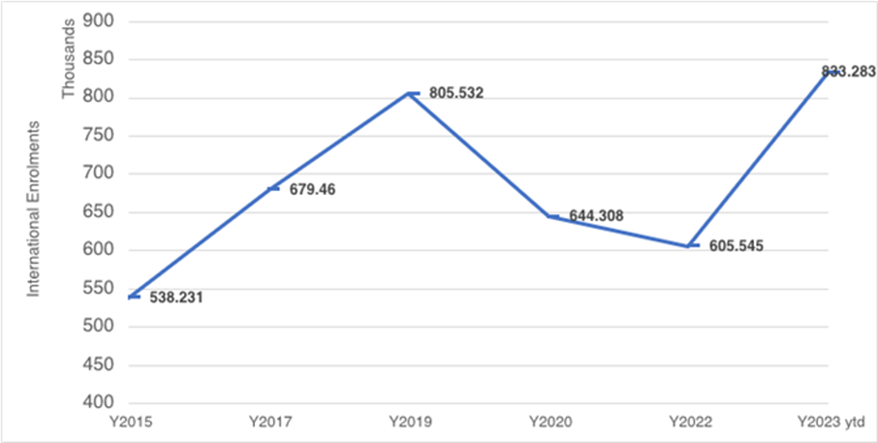 Chart: International Enrolments – Australia, courtesy of McCrindle
Chart: International Enrolments – Australia, courtesy of McCrindle
Increasing diversity is also apparent – both in terms of source country and the levels at which students enroll to study. China remains the largest source country but like Europe, Canada and the United States, South Asian arrivals are growing much faster – as the graphic below from research group StudyMove illustrates. Indeed, through our own partnership with The University of Western Australia, we have noticed a very large increase in student arrivals from Bhutan, something most European based forecasters may not have identified.
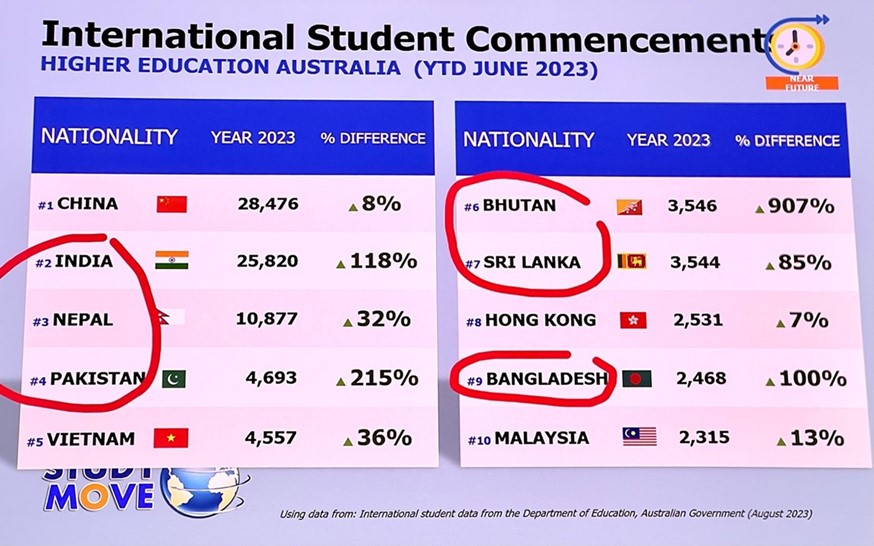 Chart: Courtesy of StudyMove
Chart: Courtesy of StudyMove
- A greater interest in transnational education
Australia is already a strongly established regional player in transnationally delivered education – with universities like Monash and RMIT pioneering the establishment of campuses in Malaysia, Indonesia and Vietnam respectively.
Minister Clare announced at the conference his forthcoming trip to India to cement ties and to announce the establishment of India’s first international campus. This will be the Australian Education Minister’s second trip to India in 12 months – it is clear which regions Australia is placing its bets on for the future.
- More regulation of “shonky” recruitment practice is on the way
As the sector has bounced back to pre-pandemic levels, there has been increasing concern about education routes being manipulated by unscrupulous agents and other operators. The Australian Government, quite rightly, acknowledges the importance of high-quality agents providing a vital advisory role to students entering Australia. According to Minister Clare, almost 75% of international students choosing Australia have used the services of an agent - the overwhelming majority of whom provide very high-quality services. But it is not without rogue operators.
To protect this channel, the Government is now proposing a clampdown on onshore (Australia-based) agents who encourage students to switch courses on arrival in Australia. This has been a challenge in other jurisdictions, particularly in the United States where recent shifts in patterns of demand have led to historically high levels of student attrition. It is one thing when this is based on the student ‘s best interests and transferring to a more appropriate program of study serves them better. It is quite another matter when this is done to line the pockets of rogue actors, manipulating student choice for their own interests. Australia appears determined to act in order to protect the integrity and value of its export sector.
- A focus on international student employability
As elsewhere, there is a focus on improving international student outcomes, accompanied by some hand wringing on how to support international students remaining in Australia but struggling to access the same level of opportunity as domestic graduates.
Influential Australian think tank, the Grattan Institute has just released a report, Graduates in Limbo: International student pathways after graduation calling for reform of the post-graduation work pathway for international students. In summary it argues for a tightening of the post study work rights offered to all students and the introduction of a more structured pathway to permanent residence for students meeting Australian labor market needs. It argues too many international graduates remain under-employed and get caught in a hamster wheel of visa extensions because they are unable to migrate permanently.
Our own research based on student demand drivers elsewhere suggests that perhaps some of the assumptions underpinning the report conclusion may be misplaced. The Grattan report assumes students are looking to permanently migrate. That is not always the case as the chart below illustrates. We have found that obtaining work experience in the destination country is a very important driver of student demand - it doesn’t always correlate with a long-term intention to migrate.
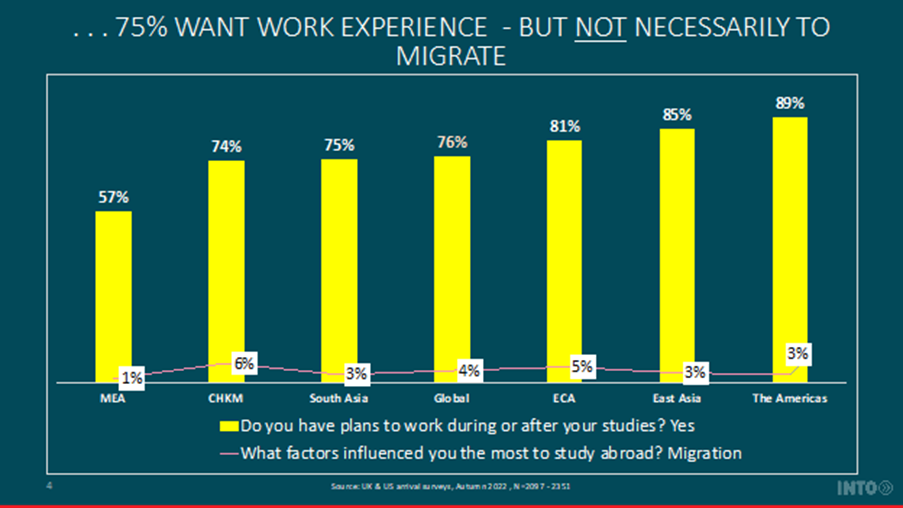
As a sector we should be doing more to support students gain meaningful experiences when they are studying in destination countries. But we should not overlook the importance of supporting graduates as they look to take those skills and experiences back home or to a third country, something we at INTO are developing through our network of in-country centers.
- The future is here – Generation Alpha on the rise
Ashley Fell, of Australian social research group McCrindle took delegates on a data journey to the future with a focus on both Gen Z, about which we have also written and Generation Alpha – those born between 2010 and 2024 - who will be entering tertiary education over the next five years. I’ve taken the liberty of sharing a few slides from Ashley's excellent presentation here - a master class in data-informed story telling. Their report on Generations Z and Alpha is a snip at AUD$49.00.
So, what to conclude? Education is moving from personalized to predictive. They assert that generational attitude to technology is shaped most profoundly by the age at which people are exposed. So, the upcoming Generation Alpha will live in a world where machine learning is the norm – where the internet of the body – think haptic headphones, implantable technologies, voice activated everything, and autonomous transportation are part of their everyday existence. They will be the planet’s most connected generation – and also the largest cohort by 2034. It may feel some way off – but the first swathe of Gen Alpha is only five years from tertiary education.
 Graphic: Courtesy of McCrindle
Graphic: Courtesy of McCrindle
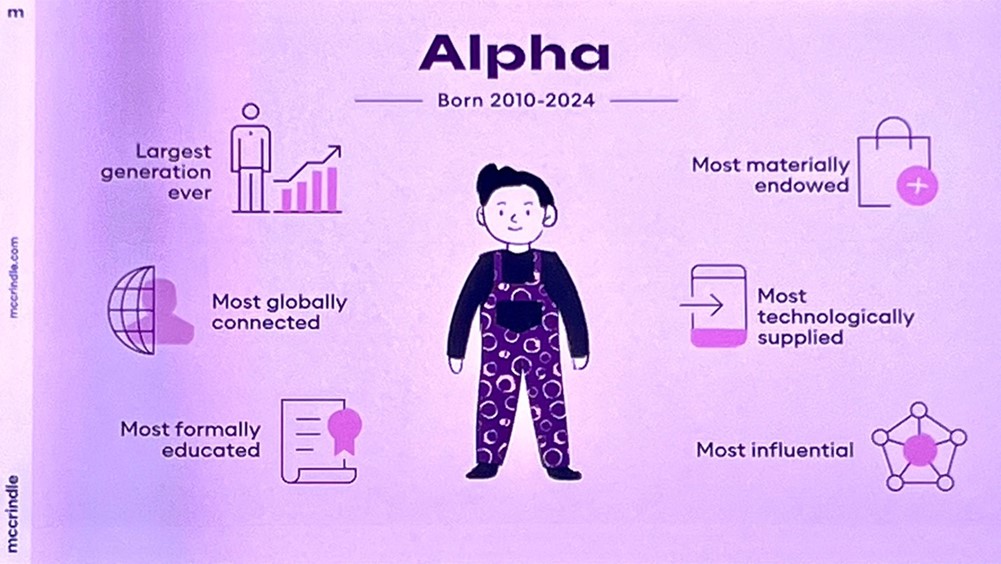 Graphic: Courtesy of McCrindle
Graphic: Courtesy of McCrindle
Despite the constant change and evolving dynamics of our sector, the fundamental value of what we strive towards as a global education community was best summed up by Stan Grant, writer, broadcaster and First Nation Australian. He described his own experience as a young aboriginal, amongst the first in his family to finish high school, let alone go to university. Education changed the trajectory of his life, because it gave him an opportunity to meet people he would never have otherwise encountered. Enabling others to meet, to learn from diverse perspectives is the enduring value of what we all do. And the world is a better place for it.